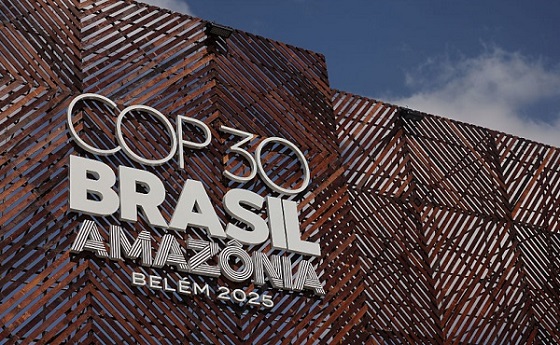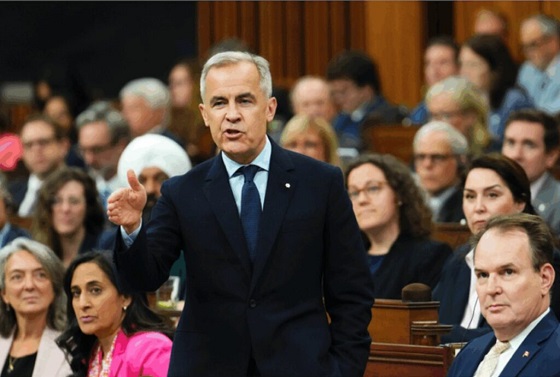Uncategorized
Dolce&Gabbana fiasco shows importance, risks of China market

BEIJING — Don’t mess with China and its growing cadre of powerful luxury consumers.
Dolce&Gabbana learned that lesson the hard way when it faced a boycott after Chinese expressed outrage over what were seen as culturally insensitive videos promoting a major runway show in Shanghai and subsequent posts of insulting comments in a private Instagram chat.
The company blamed hackers for the anti-Chinese insults, but the explanation felt flat to many and the damage was done. The Milan designers
Then, as retailers pulled their merchandise from shelves and powerful e-commerce sites deleted their wares, co-founders Domenico Dolce and Stefano Gabbana went on camera — dwarfed against the larger backdrop of an ornate red wall-covering — to apologize to the Chinese people.
“We will never forget this experience, and it will definitely never happen again,” a solemn-looking Gabbana said in a video statement posted Friday on social media.
The apology video , and the sharp public backlash that demanded it, shows the importance of the Chinese market and the risks of operating in it. More broadly, it highlights the huge and still-growing influence of China, a country that cannot be ignored as it expands economically, militarily and diplomatically.
These trends are intertwined in frequent outbursts of nationalist sentiment among consumers who feel slighted by foreign brands or their governments. It’s not the first time a company has apologized, and it surely won’t be the last. Mercedes-Benz did so in February for featuring a quote by the Dalai Lama on its Instagram account.
For Dolce&Gabbana, it could be mark the end of its growth in China, a crucial market for global luxury brands that it has cultivated since opening its first store in 2005 and where it now has 44 boutiques.
“I think it is going to be impossible over the next couple of years for them to work in China,” said Cary Cooper, a professor of organizational psychology and health at Manchester University in England. “When you break this kind of cultural codes, then you are in trouble. The brand is now damaged in China, and I think it will be damaged in China until there is lost memory about it.”
London-based Brand Finance consultancy estimates that the scandal could wipe up to 20
That could shake Dolce&Gabbana’s financial health. The privately held company does not release its individual sales figures. But Chinese consumers are responsible for a third of all luxury spending around the globe, according to a recent study by Bain consultancy. That will grow to 46
“Without China, the hinterland for growth, D&G will obviously be in a weak competitive position and in danger of being eliminated,” the Chinese business magazine New Fortune said in a social media post Sunday. “This is one of the major reasons why D&G finally lowered its head. They really cannot survive without the Chinese market.”
While Dolce&Gabbana has displayed a knack for social media engagement, inviting millennial influencers with millions of collective followers to sit in their front rows or walk in their shows, that engagement has been a double-edged sword. Pop idol Karry Wang, who has drawn hundreds of screaming Chinese fans to the designer’s Milan showroom for season runway shows, was one of the first to disavow the brand, saying he was ending his role as Asia-Pacific brand ambassador.
Dolce found himself on the defensive several years ago after Elton John lashed out for comments that suggested he did not support gay couples using surrogate mothers to have children. At the time, more than 67,000 tweets urged #boycottdolcegabbana, while Courtney Love vowed to burn her Dolce&Gabbana garb and Martina Navratilova pledged to trash her D&G shirts.
Gabbana, who has 1.6 million Instagram followers, faced a more contained backlash earlier this year when he responded to a collage of Selena Gomez photos on Instagram with the comment, “She’s really ugly.”
Celebrities took to social media Wednesday to blast Dolce&Gabbana and said they would boycott the show, which was
The rapid escalation into a public relations disaster was fueled by social media. Individuals posted videos of themselves cutting up or burning their Dolce&Gabbana clothes, or picking them up with chopsticks and putting them in the trash. A parody of the offending Dolce&Gabbana videos, which featured a Chinese woman using chopsticks to eat pizza and an oversized cannoli, shows a white man trying to eat Chinese food with a fork and knife. At least three rap bands took up the cause with new songs.
“Companies that don’t respect us don’t deserve our respect,” Wang Zixin, team leader of CD Rev, a nationalist rap band, said by phone from Chengdu, the capital of Sichuan province. Its new song had been viewed more than 850,000 times on Weibo.
“We hope people will remember companies that have ever insulted China, and not forget about them when the fallout passes,” Wang said.
That sense of pride reflects a nationalism that has been encouraged by the government, often in disputes China has with other countries over other foreign products.
Sales by Japanese automakers plunged in 2012 amid tensions between islands both countries claim in the East China Sea. The clash also illustrated the complexity of Chinese sentiment: Industry analysts said buyers didn’t want to be seen in Japanese auto showrooms but went ahead with planned purchases once tensions had passed.
More recently, several foreign companies ran afoul of Beijing’s insistence that they explicitly refer to Taiwan, a self-governing territory, as part of China. Many complied, showing how important the Chinese market has become.
Delta, American and other airlines agreed to refer to Taiwan as part of China, and Zara now says “Taiwan, China” on its
Actor Richard Gere, a supporter of the Dalai Lama, has told The Hollywood Reporter that movie studios balk at hiring him for fear of an official or public backlash that might affect ticket sales in China.
It remains unclear whether the D&G mea culpa video will stop the backlash — or if it will have implications for Made-in-Italy at large. The scandal erupted as Italy’s high-end furniture and design companies were making an annual presentation in Shanghai and as Miu Miu, the Prada Group’s little sister line, showed its cruise line in Shanghai.
Italian designers have so far refrained from comment. Dolce & Gabbana has remained conspicuously outside of the Italian Fashion Chamber, which organizes fashion weeks and acts as a lobby for the fashion industry.
Brand Finance’s luxury expert, Alex Haigh, said the scale of the Chinese reaction risked contagion in other markets, but that the brand could get ahead of the scandal if it makes sincere change. “They have made a big storm for themselves,” he said. “They need to wait a few months, and potentially do something like Volkswagen, when it had the emission scandal and repositioned itself as a more environmentally friendly electric-vehicle-first brand. Sometimes these issues can be a focal point for change.”
Italian commentators mused whether the Dolce&Gabbana protests were truly spontaneous or if there was some level of government control behind them. The government has publicly said the spat had no diplomatic element and would not comment.
“Anywhere in the world, an entrepreneur can make a mistake, use inappropriate language. Usually it is the consumers and the market to decide the seriousness of the
___
Barry reported from Milan. AP journalists Joe McDonald and Dake Kang and researchers Henry Hou and Jiawei Chen contributed to this report.
Ken Moritsugu And Colleen Barry, The Associated Press
Uncategorized
Cost of bureaucracy balloons 80 per cent in 10 years: Public Accounts

The cost of the bureaucracy increased by $6 billion last year, according to newly released numbers in Public Accounts disclosures. The Canadian Taxpayers Federation is calling on Prime Minister Mark Carney to immediately shrink the bureaucracy.
“The Public Accounts show the cost of the federal bureaucracy is out of control,” said Franco Terrazzano, CTF Federal Director. “Tinkering around the edges won’t cut it, Carney needs to take urgent action to shrink the bloated federal bureaucracy.”
The federal bureaucracy cost taxpayers $71.4 billion in 2024-25, according to the Public Accounts. The cost of the federal bureaucracy increased by $6 billion, or more than nine per cent, over the last year.
The federal bureaucracy cost taxpayers $39.6 billion in 2015-16, according to the Public Accounts. That means the cost of the federal bureaucracy increased 80 per cent over the last 10 years. The government added 99,000 extra bureaucrats between 2015-16 and 2024-25.
Half of Canadians say federal services have gotten worse since 2016, despite the massive increase in the federal bureaucracy, according to a Leger poll.
Not only has the size of the bureaucracy increased, the cost of consultants, contractors and outsourcing has increased as well. The government spent $23.1 billion on “professional and special services” last year, according to the Public Accounts. That’s an 11 per cent increase over the previous year. The government’s spending on professional and special services more than doubled since 2015-16.
“Taxpayers should not be paying way more for in-house government bureaucrats and way more for outside help,” Terrazzano said. “Mere promises to find minor savings in the federal bureaucracy won’t fix Canada’s finances.
“Taxpayers need Carney to take urgent action and significantly cut the number of bureaucrats now.”
Table: Cost of bureaucracy and professional and special services, Public Accounts
| Year | Bureaucracy | Professional and special services |
|
$71,369,677,000 |
$23,145,218,000 |
|
|
$65,326,643,000 |
$20,771,477,000 |
|
|
$56,467,851,000 |
$18,591,373,000 |
|
|
$60,676,243,000 |
$17,511,078,000 |
|
|
$52,984,272,000 |
$14,720,455,000 |
|
|
$46,349,166,000 |
$13,334,341,000 |
|
|
$46,131,628,000 |
$12,940,395,000 |
|
|
$45,262,821,000 |
$12,950,619,000 |
|
|
$38,909,594,000 |
$11,910,257,000 |
|
|
$39,616,656,000 |
$11,082,974,000 |
Uncategorized
Trump Admin Establishing Council To Make Buildings Beautiful Again
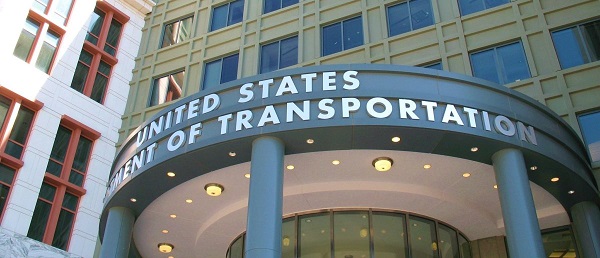

From the Daily Caller News Foundation
By Jason Hopkins
The Trump administration is creating a first-of-its-kind task force aimed at ushering in a new “Golden Age” of beautiful infrastructure across the U.S.
The Department of Transportation (DOT) will announce the establishment of the Beautifying Transportation Infrastructure Council (BTIC) on Thursday, the Daily Caller News Foundation exclusively learned. The BTIC seeks to advise Transportation Secretary Sean Duffy on design and policy ideas for key infrastructure projects, including highways, bridges and transit hubs.
“What happened to our country’s proud tradition of building great, big, beautiful things?” Duffy said in a statement shared with the DCNF. “It’s time the design for America’s latest infrastructure projects reflects our nation’s strength, pride, and promise.”
“We’re engaging the best and brightest minds in architectural design and engineering to make beautiful structures that move you and bring about a new Golden Age of Transportation,” Duffy continued.
Mini scoop – here is the DOT’s rollout of its Beautifying Transportation Infrastructure Council, which will be tasked with making our buildings beautiful again. pic.twitter.com/
9iV2xSxdJM — Jason Hopkins (@jasonhopkinsdc) October 23, 2025
The DOT is encouraging nominations of the country’s best architects, urban planners, artists and others to serve on the council, according to the department. While ensuring that efficiency and safety remain a top priority, the BTIC will provide guidance on projects that “enhance” public areas and develop aesthetic performance metrics.
The new council aligns with an executive order signed by President Donald Trump in August 2025 regarding infrastructure. The “Making Federal Architecture Beautiful Again” order calls for federal public buildings in the country to “respect regional architectural heritage” and aims to prevent federal construction projects from using modernist and brutalist architecture styles, instead returning to a classical style.
“The Founders, in line with great societies before them, attached great importance to Federal civic architecture,” Trump’s order stated. “They wanted America’s public buildings to inspire the American people and encourage civic virtue.”
“President George Washington and Secretary of State Thomas Jefferson consciously modeled the most important buildings in Washington, D.C., on the classical architecture of ancient Athens and Rome,” the order continued. “Because of their proven ability to meet these requirements, classical and traditional architecture are preferred modes of architectural design.”
The DOT invested millions in major infrastructure projects since Trump’s return to the White House. Duffy announced in August a $43 million transformation initiative of the New York Penn Station in New York City and in September unveiledmajor progress in the rehabilitation and modernization of Washington Union Station in Washington, D.C.
The BTIC will comprise up to 11 members who will serve two-year terms, with the chance to be reappointed, according to the DOT. The task force will meet biannually. The deadline for nominations will end Nov. 21.
-
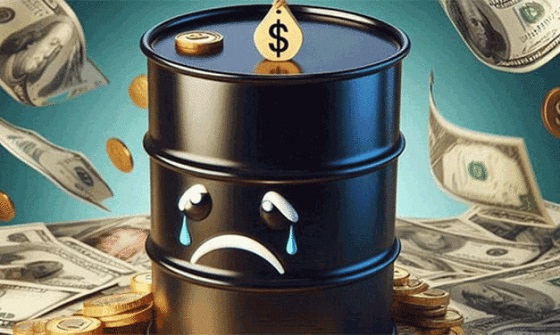
 Business2 days ago
Business2 days agoGeopolitics no longer drives oil prices the way it used to
-

 Business2 days ago
Business2 days agoArgentina’s Milei delivers results free-market critics said wouldn’t work
-
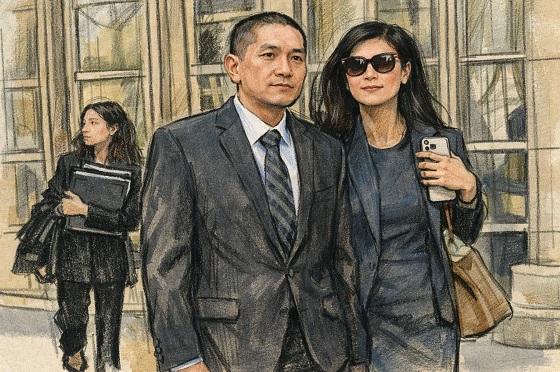
 Business2 days ago
Business2 days agoDeadlocked Jury Zeroes In on Alleged US$40 Million PPE Fraud in Linda Sun PRC Influence Case
-
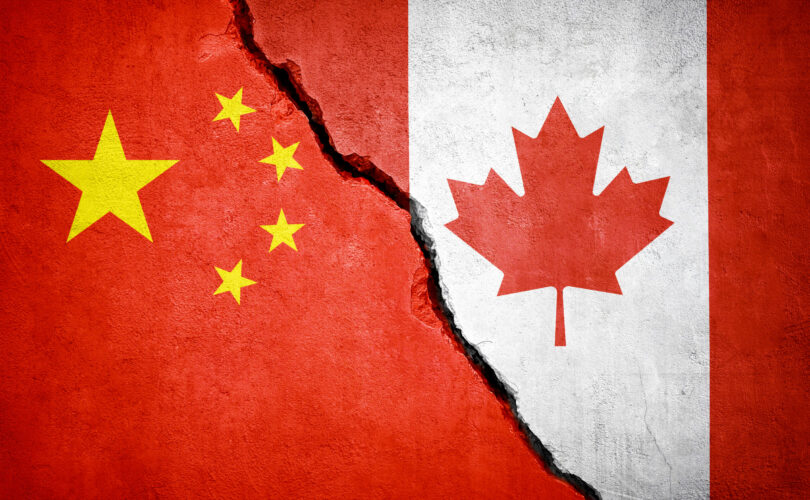
 International1 day ago
International1 day agoOttawa is still dodging the China interference threat
-
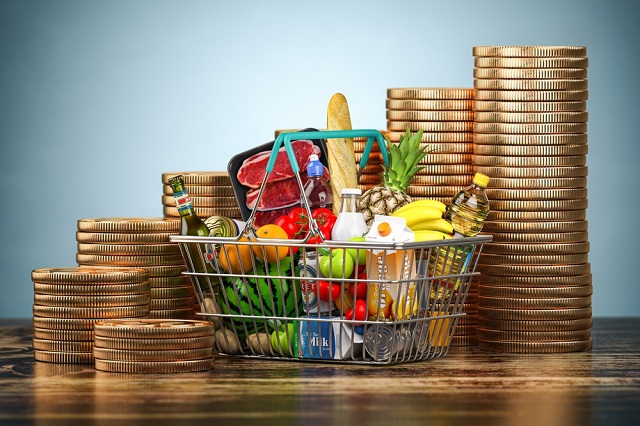
 Business1 day ago
Business1 day agoTaxing food is like slapping a surcharge on hunger. It needs to end
-

 COVID-191 day ago
COVID-191 day agoJudge denies Canadian gov’t request to take away Freedom Convoy leader’s truck
-

 espionage1 day ago
espionage1 day agoCarney Floor Crossing Raises Counterintelligence Questions aimed at China, Former Senior Mountie Argues
-

 Energy1 day ago
Energy1 day ago75 per cent of Canadians support the construction of new pipelines to the East Coast and British Columbia







